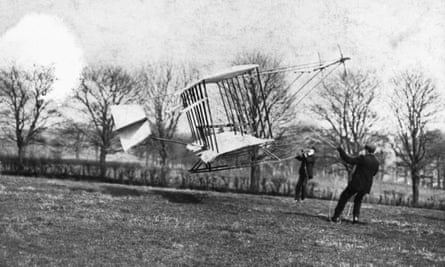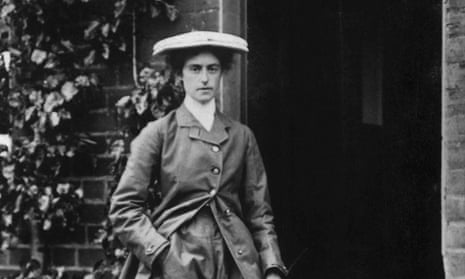In an era that stifled women, Lilian Bland blazed with a life force that defied all convention, including gravity.
She worked as a press photographer, smoked, wore trousers and dungarees, rode a bicycle, taught jiu-jitsu and opened a car dealership, apparently impervious to the fact that she lived in the Edwardian era.
In August 1910, Bland etched a niche in history – she is believed to be the first woman to design, build and fly her own aeroplane, a feat accomplished over Shane’s Castle estate in county Antrim, Northern Ireland. She called the plane Mayfly, explaining: “It may fly, it may not.”
Her career was glorious and scandalous and groundbreaking – and then, little by little, forgotten.
While other female pioneers such as Amelia Earhart were celebrated, Bland lapsed into obscurity. When she died in 1971, aged 92, a keen gardener, painter and gambler, she was remembered, if at all, as a footnote.

That is now changing. An exhibition, an auction and posts on social media are shining a light on her life and nudging Lilian Bland towards the feminist pantheon.
Bland is featured in a new National Museums NI exhibition at the Ulster Transport Museum in Cultra, Belfast, on Northern Ireland innovators who made a global impact.
“It’s only in recent years that her story has come to life,” said Clare Ablett, the curator. “She did not conform to Edwardian-era rules and would not let restriction on her femininity hold her back in any way. She never let anything hold her back. Lilian is very inspiring and not just for young girls and women, for anyone.”
Feedback on the exhibition has been positive, with the latest group of visitors to the museum on Tuesday marvelling at Bland’s story, said Ablett. “She was quite an amazing woman.”
Coincidentally, four paintings that Bland made in her home in Cornwall were auctioned last month.
The seller did not do it for the money, said Mimi Connell-Lay, of the Penzance-based David Lay Auctions. “They were sitting in a cupboard not doing anything and she thought this was an opportunity to put Lilian’s story out in the world again. She just wanted people to know about her because she’s very unknown, which is tragic.”
The paintings are amateur – it was a hobby for Bland – and ordinarily might not even reach auction, but after buyers learned about Bland the lots sold for £350-£550. “She’s now my new favourite heroine,” said Connell-Lay, who researched Bland’s background. “People were bidding because of her history.”
Bland was born in 1878 in Kent, part of the Anglo-Irish gentry. Edwardian society ladies led empty lives full of empty talk, she once said. A harsh judgment perhaps, but Bland led a wild, precious – and perilous – life.
She went hunting and shooting and rode horses like a man, spurning side-saddle and writing a guide to falling off safely. She worked as a photojournalist. After her mother died she left England and with her father joined relatives in Carnmoney, County Antrim.
Her interest piqued by Louis Blériot’s aviation exploits in France, she took notes at an airshow – the men assumed she was a secretary – and went home and designed and built a glider. She bought an engine in England, which she brought back to Northern Ireland by train, and built the Mayfly.
After reportedly using her aunt’s ear trumpet to put fuel in the engine, she made her inaugural flight – less than a mile – on 31 August 1910. The sight of a bull in the field below is said to have encouraged her to stay airborne.
After advertising her skills as a plane-builder and selling Ford cars she married a cousin, Charles Bland, and emigrated to the Canadian wilderness in 1912.
The marriage foundered after their only child, Patricia, died of tetanus aged 16. Bland returned to England and lived in Cornwall until her death. Her nickname, “the flying feminist”, came later.
Recognition began to grow in 2010 during the centenary of her first flight. A historical society in Antrim unveiled a plaque, and authorities renamed Glengormley Park after her, installing a metal sculpture of Mayfly. A website dedicated to Bland was created in 2014.
Guy Warner, an aviation historian who wrote a biography in 2010, welcomed the renewed recognition for Bland. “She was forgotten because she was in Ireland, an obscure part of the world in 1910, and because she was a woman. She was expected to marry well and run a household, not to do the tremendous things she did.”
